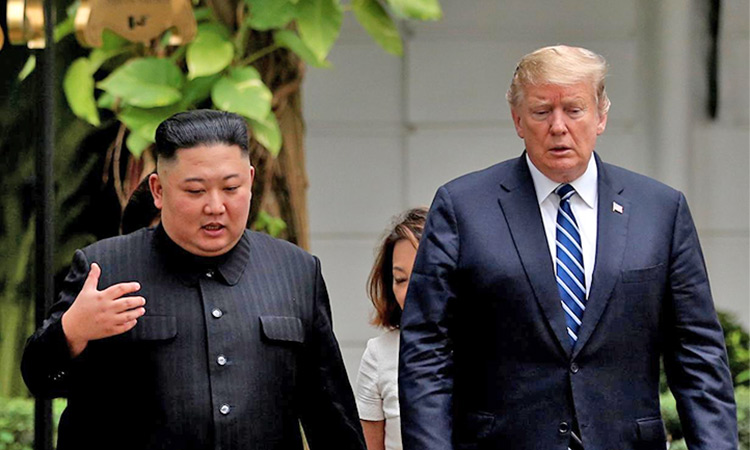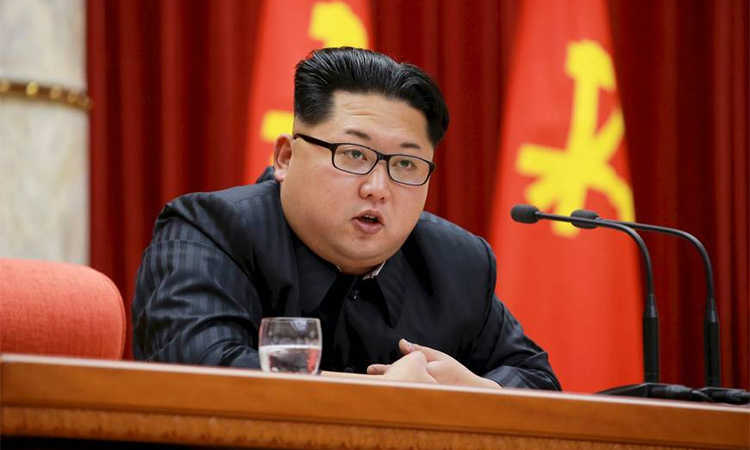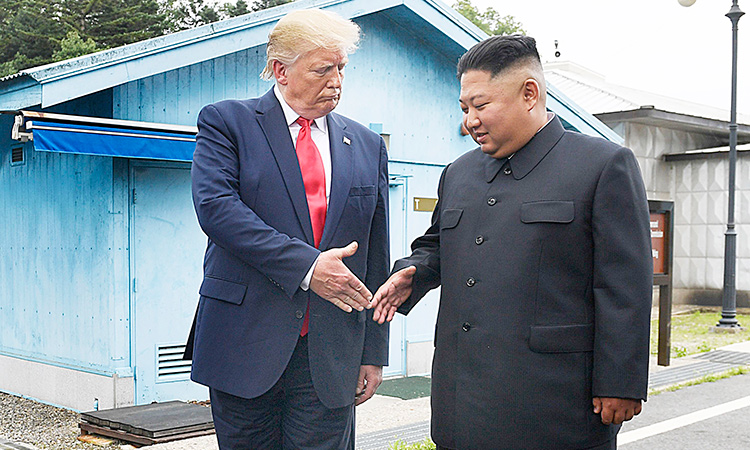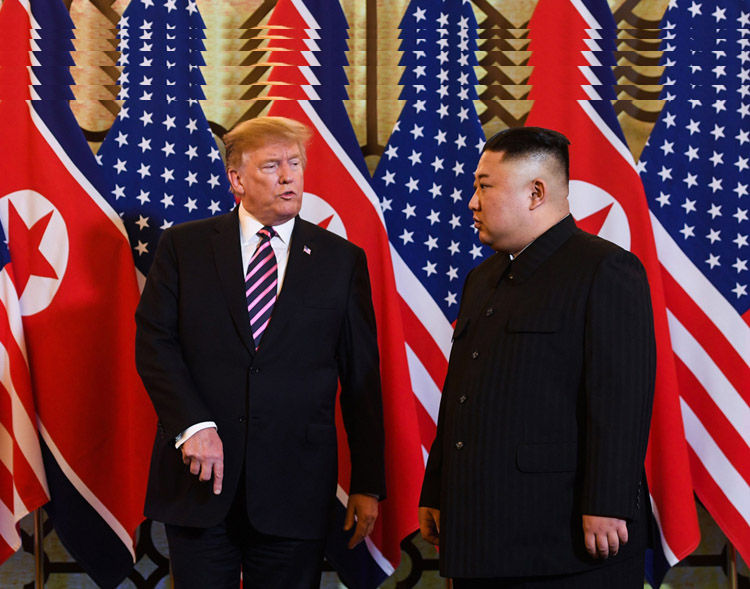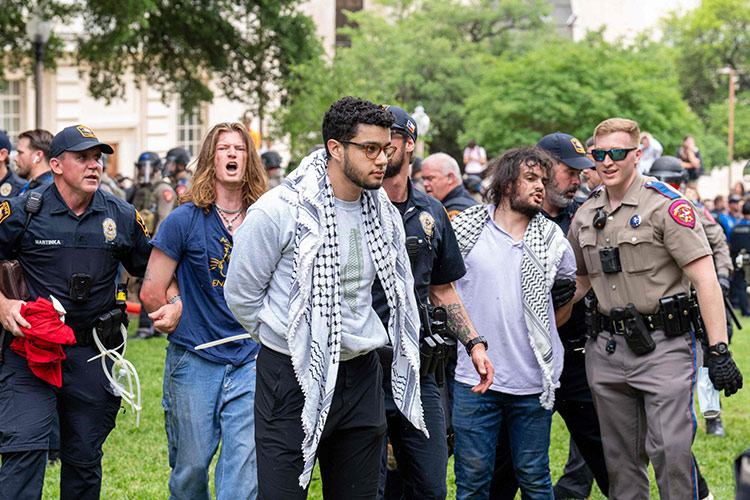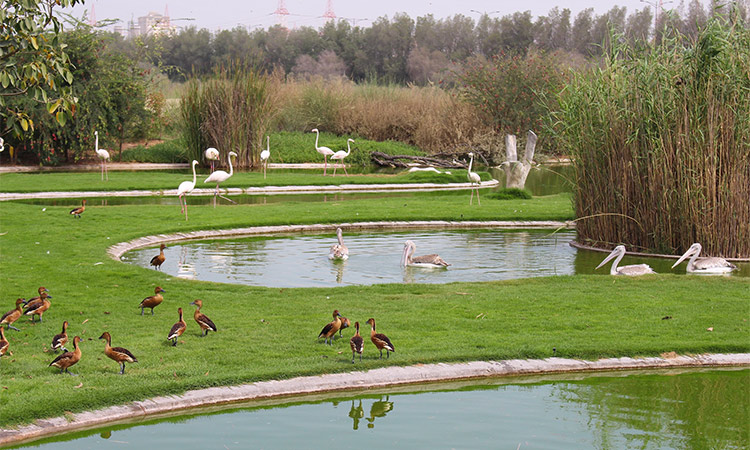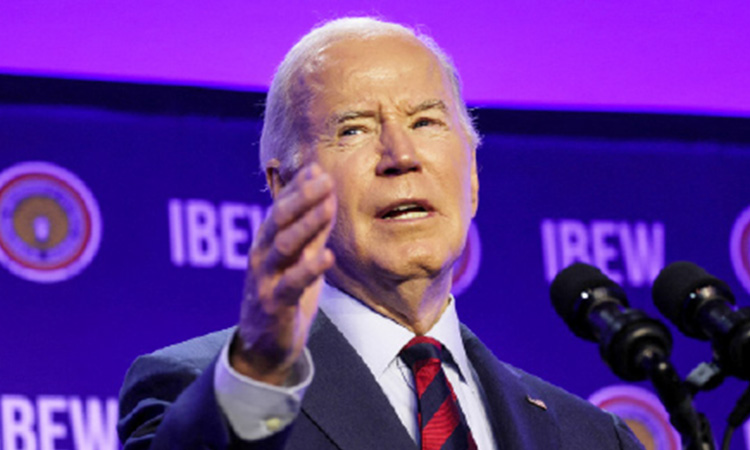Is Trump’s N.Korea diplomacy another of his clever stunts?
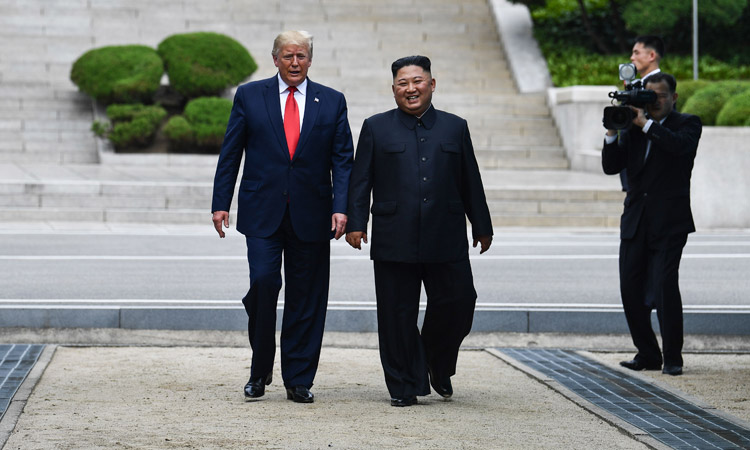
Donald Trump with Kim Jong-Un at the DMZ. Reuters
Doyle Mcmanus, Tribune News Service
It’s undeniable: President Donald Trump’s photo-op meeting with Kim Jong Un in the demilitarised zone that separates North and South Korea on Sunday made for great television. “This is a historic moment,” Trump said for the cameras, in case anyone missed the point.
But was it also great statecraft — or merely a clever stunt? Without tangible progress soon, the apparently impromptu DMZ summit will turn out to have been Potemkin diplomacy — a shiny facade with nothing underneath.
The only agreement the two leaders announced was a decision to restart meetings of their lower-level diplomats. North Korea broke off those talks after Trump and Kim collided at their February summit in Hanoi.
Resuming the “working level” sessions is a step forward in procedural terms, but it’s no guarantee of substantive progress toward the US goal — getting Kim to give up his still-growing arsenal of nuclear weapons and long-range ballistic missiles that can deliver them.
An earlier round of meetings went nowhere, mostly because Kim’s negotiators said they were not authorised to talk about nuclear weapons. They wanted to talk about their top priority instead: Kim’s demand for an end to international economic sanctions. The tangled history of the negotiations since the first summit in Singapore in June 2018 is a lesson in the limits of personal diplomacy — even when the president and one of the world’s most ruthless dictators declare themselves best friends forever. The rapprochement began after Trump appeared to threaten military action, famously threatening “fire and fury like the world has never seen” in August 2017.
Pyongyang responded by testing its most powerful long-range ballistic missile, one capable of reaching the continental United States, and staging its largest-ever nuclear test. South Korea and China were sufficiently concerned that they pressed Kim to ratchet back.
After their brief Singapore summit, Trump and Kim issued a vaguely-worded commitment to seek peace, prosperity and “the denuclearization of the Korean peninsula.” But it quickly became clear that the two leaders had never settled on a common definition of denuclearisation — hence the danger of personal diplomacy.
The US side wants North Korea to give up its nuclear arsenal and production facilities. North Korea wants the removal of the US nuclear umbrella over South Korea. At Hanoi, the two leaders arrived with specific proposals — and each side pushed too far. Trump asked for complete denuclearisation — again loosely defined — in exchange for a vague promise of U.S. investments in North Korea’s economy. Kim proposed closing one of his several nuclear weapons complexes in exchange for lifting most international sanctions.
That brings us to where we are today. Here’s a scorecard: Kim’s military is still producing nuclear material and improving its missiles, including those capable of hitting US forces in Japan and South Korea. US officials admit that there’s no sign Kim intends to give up his nuclear deterrent.
Three summits with the US president have bolstered Kim’s stature and his legitimacy as a leader, both at home and around the world. On the US side, Kim’s decision to suspend nuclear tests and long-range missile tests is clearly a good thing. But the underlying problem, a rogue communist regime with nuclear weapons, persists.
Despite the hoopla, Trump’s best-friend diplomacy has produced no lasting outcomes. That might change if both leaders find a way to be more flexible — as Trump has already hinted he will do.
